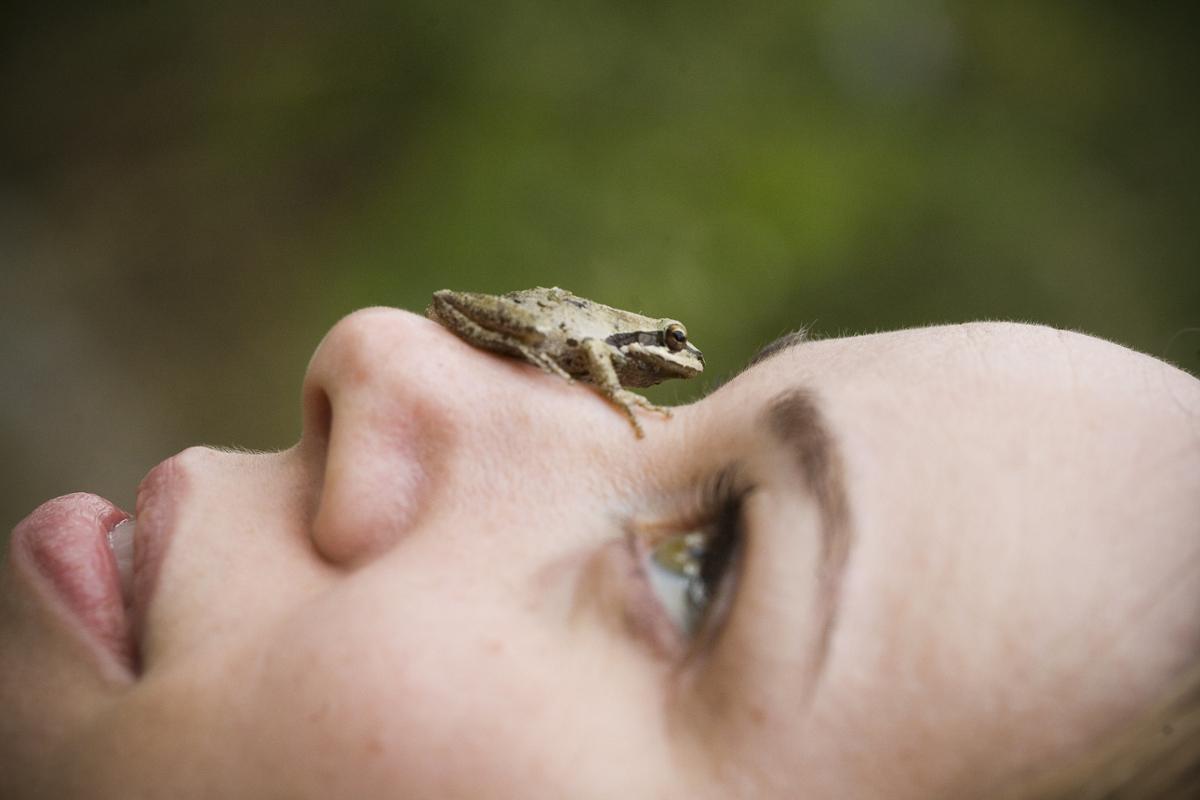It’s the classic fairy tale. The young paramour, even though they don’t have a voice, must convince their beau to fall in love with them. A watery creature now on land, they hope to unite with their beloved, or risk extinction.
Sure, this is the plot to The Little Mermaid, but it’s also the plight of Hyperolius ukaguruensis, a newly discovered species of spiny-throated reed frog. Just like the mermaid, this amphibian is unable to sing.
Researchers found the creature in the Ukaguru Mountains of Tanzania. Though there are now eight species of spiny-throated reed frogs, all living in East Africa, this one stood out with its golden coloration and relatively tiny eyes. And like each of the other seven species, H. ukaguruensis lives in a secluded forest habitat—a miniscule kingdom of its own.
Spiny-throated reed frogs don’t ribbit, an unusual trait. For most frogs, the male amplifies his croak by inflating and deflating his vocal sac—the skin around his throat. These frogs don’t do that. Males can make small noises, but can’t call loudly to mates. However, they may have developed a way to compensate for their quietness: The males’ vocal sacs are covered in small bumps, or spines. Scientists suspect that females feel the bumps to identify a mate. In their case, the females can kiss a frog and get their prince, without accidently choosing an ogre.
It’s a quiet romance. Yet due to climate change and habitat loss of those tiny forest kingdoms, spiny-throated reed frogs could soon go extinct. Conservation efforts must create the happily ever after for the small and silent creatures of our world.










